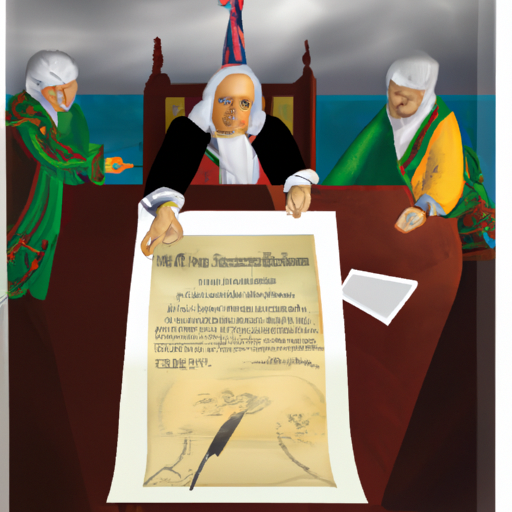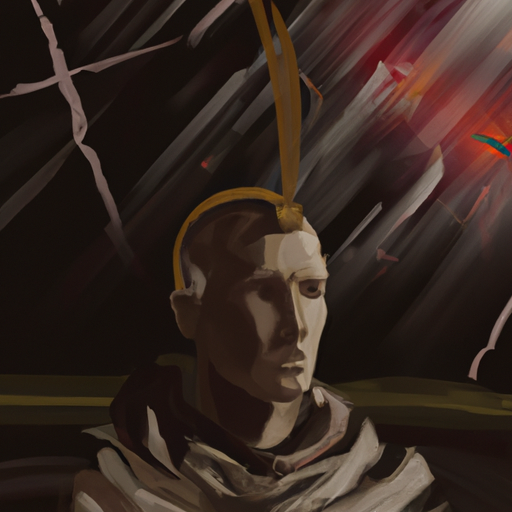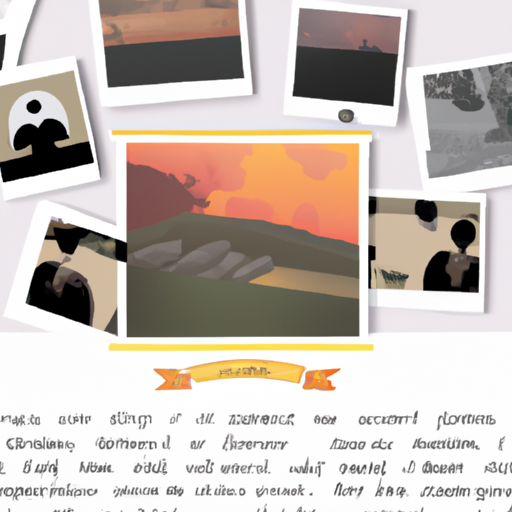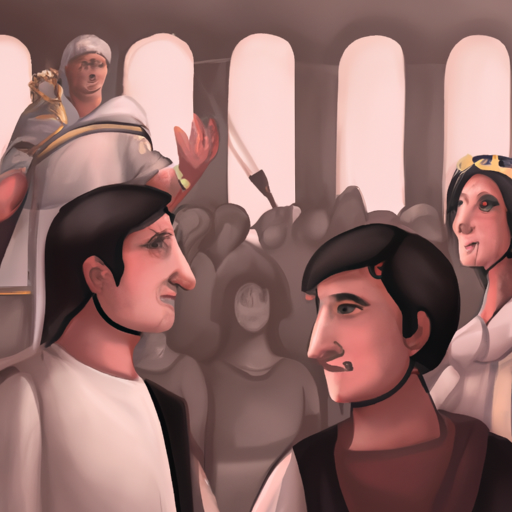Exploring the History of India: Uncovering its Ancient Roots
Unlock the secrets of a country that has stood the test of time – India. Delve into a realm of history that is as deep and wide as can be imagined. Uncover stories and legends from days gone by, and marvel at the culture and traditions that have been preserved for centuries. Step into a world where ancient wisdom still holds true today.

Awe-inspiring, mysterious, and captivating – India’s history is one of immense depth and breadth. Through the ages, it has been home to a vast array of civilizations, each leaving behind its own unique imprint in the form of culture and traditions. From the ancient Indus Valley Civilization to the Mughal Empire, India has seen many changes throughout its time.
Delve into this past and discover stories that have been passed down through generations. Legends of kings and warriors, saints and mystics – all these tales can still be found within India’s history today. Uncovering them is like uncovering a hidden treasure – they offer us insight into how ancient wisdom still applies in our modern world.
Take a journey through time and explore the secrets that India holds within its deep and wide history – you’re sure to be amazed at what you find!
.
Introduction

Mystical and voluminous, India has been a fixture of the world for eons. With its roots stretching back to the Paleolithic era, it is one of the oldest civilizations still standing. The land teems with ancient customs and traditions that have been passed down through generations, leaving an indelible mark on modern-day life. Home to two of the oldest religions in existence–Hinduism and Buddhism–India’s past is alive in its many places of worship, tourist attractions, languages, art forms, music styles, literature, and architecture. A journey through time awaits!
– The Ancient History of India
A country with a long-standing past, India has seen its fair share of empires, dynasties and rulers throughout the centuries. Starting from the Indus Valley Civilization, which flourished around 3000 BCE in the western part of South Asia, India’s history is filled with moments of grandeur and defeat.
The Mauryan Empire was one of the most powerful empires in ancient India and was founded by Chandragupta Maurya in 321 BCE. During this period, Buddhism spread throughout India and Ashoka became an influential figure after his conquest of Kalinga. He also issued edicts that encouraged religious tolerance and peace. The Gupta Empire followed soon after and is known as the “Golden Age” due to its advances in science, mathematics, literature and art.
In 1526 CE, Babur established the Mughal Empire which lasted until 1857 CE when it fell due to British colonization. During this time, many monuments were built such as Taj Mahal which still stands today as a symbol of love between Emperor Shah Jahan and his beloved wife Mumtaz Mahal. The Mughals also brought about many changes in terms of language, architecture and art which still influence modern-day Indian culture today.
The British Raj started in 1858 CE after the fall of Mughal Empire when British forces took control over India from East India Company. This period saw major social reforms such as abolishing Sati (the practice where widows were burned alive) as well as introducing English education system into India which helped shape modern day education system in India today.
From its earliest days to present times, India has been home to a plethora of cultures that have left their mark on society; making it one of the oldest civilizations with a legacy that continues to be felt all over the world.
– How India’s History Influenced its Culture
Awe-inspiring, India’s history has had an unprecedented impact on the culture of the country. The Indus Valley civilization, which flourished between 3300 BC and 1300 BC, left behind a legacy of cities that exhibited advanced engineering and architecture, as well as evidence of religious practices such as ritual bathing. Moreover, trade with other parts of Asia was also apparent during this period.
The Vedic Age (1500 BC – 500 BC) saw the emergence of Hinduism and many key texts were written during this time. Additionally, various small kingdoms began to emerge across India.
In the centuries that followed (500 BC – 300 AD), foreign invasions by Persians, Greeks and Huns influenced Indian culture greatly; introducing new religions such as Buddhism and Jainism, along with new styles of art and literature from these foreign cultures.
From 300 AD to 1200 AD, much of northern India was ruled by Islamic dynasties like the Delhi Sultanate and Mughal Empire; resulting in great cultural achievements such as advances in literature and architecture, as well as increased trade with other parts of Asia and Europe. Simultaneously, Islamic laws were imposed upon Indian society by their rulers.
The British colonial rule (1200 AD onwards) had a huge effect on Indian culture through its introduction of English language education systems and western-style government institutions. This period also saw large-scale migrations from other parts of India into cities like Mumbai and Kolkata due to economic opportunities created by British rule.
India’s long history has been paramount in forming its distinct culture today; each era adding something unique while still retaining elements from earlier times that have been passed down for generations.
– Examining the Historical Significance of India
Verily, India’s antiquity is one of the most multifarious on earth. From its antique foundations to its current democratic system, India has had a profound effect on the planet’s culture and politics. Investigating India’s past can assist us in comprehending both its former and contemporary role in our world.
Records of India’s ancient times trace back to around 1500 BCE, when it was home to powerful civilizations such as the Indus Valley Civilization and the Mauryan Empire. These empires left behind impressive monuments, artworks, and literature that are still present today. These artifacts give us a glimpse into Indian culture during this period, including religious practices, social structures, and political systems.
Throughout its lengthy history, India has been invaded by numerous foreign powers such as the Mughals and British Empire. These invasions have had a lasting impact on Indian society, introducing new religions and cultures while also disrupting existing ones. The British rule especially left an indelible mark on India’s economy, government structure, language, education system, and more.
At present, India is one of the biggest democracies in the world with a rapidly growing economy. It hosts many major religions such as Hinduism, Buddhism, Jainism, Sikhism and Islam as well as a variety of ethnic groups with their own distinct cultures. This diversity has helped form India’s unique identity which continues to be celebrated around the world through its cuisine, music, literature and art forms.
Exploring the historical importance of India offers us an invaluable opportunity to gain insight into its past and current role in global affairs. Through understanding its various cultural influences over time we can appreciate how this ancient land has impacted our lives today in ways both grandiose and minute.
– Exploring the Impact of Foreign Invasions on India’s History
Since time immemorial, India has been witness to a plethora of foreign incursions, the earliest being the Aryan invasion circa 1500 BCE. These intruders have brought with them an array of influences that have had a substantial effect on India’s past, present and future. From Greeks and Persians to Mughals and British, these invasions have drastically altered the country’s culture, religion and economy.
The Aryan invasion gave way to the Vedic civilization in northern India, which was followed by other waves of invaders such as Alexander the Great in 326 BCE and Darius I in 519 BCE. The most impactful of these was Mahmud of Ghazni’s Muslim invasion in 1026 CE, leading to almost 500 years of Muslim rule until 1857 when British rule began.
These foreign incursions have left an indelible mark on Indian society; they brought with them new customs and beliefs that were assimilated into Indian culture over time. Religion was also changed dramatically; many Hindus converted to Islam during Muslim rule while Christianity spread during British colonial rule. Economically speaking, these intrusions introduced new technologies such as irrigation systems which allowed for more efficient farming practices as well as increased trade opportunities due to improved transportation networks.
Although many Indians view these invasions negatively due to their often violent nature, they have also resulted in positive changes such as increased cultural exchange between different communities and economic growth through increased trade opportunities. As such, it is important to recognize both the negative and positive impacts of foreign invasions on India’s history when exploring this topic further.
– Assessing the Role of Religion in India’s Historical Development
s of all faiths can come together and worship.
Zoroastrianism is an ancient faith which was practiced in Persia (now Iran) before being brought to India by Parsi traders during the 8th century CE. This religion has had a significant impact on Indian culture, particularly in terms of art and architecture; for instance, many Parsi fire temples feature intricate carvings depicting stories from Zoroastrian mythology. Additionally, some Indian cities such as Mumbai still have large Zoroastrian populations today.
Christianity was first introduced to India by St. Thomas the Apostle during the 1st century CE. Since then, Christianity has spread throughout India and it has had a major influence on Indian culture over time; for instance, Christian missionaries helped introduce new forms of education and healthcare to India during the colonial period. Additionally, there are now millions of Christians living in India today who practice their faith openly without fear of persecution.
From its earliest days until today, religion has played an important role in shaping the history and culture of India. Each faith has had its own unique impact on Indian society, from influencing art and literature to inspiring political movements. Ultimately, it is this rich religious landscape which makes India such a fascinating place to explore and learn about.
conclusion

India, a land of antiquity, is one which has been the home to multitudinous civilizations and dynasties over the eons. A plethora of archaeological findings have suggested that settlements have existed in the Indus Valley since as early as 7000 BCE. It is remarkable to think of all that has transpired throughout this nation’s storied past – from the Mughal Empire to British Raj – each leaving its own indelible mark on India’s history.
.
Some questions with answers
Q1. How old is India?
A1. India has a long and rich history that dates back to the Indus Valley Civilization of 3300-1300 BCE.
Q2. What are some important events in Indian history?
A2. Important events in Indian history include the establishment of the Mughal Empire, the British Raj, India’s independence movement, and the formation of modern India in 1947.
Q3. What other civilizations existed in ancient India?
A3. In addition to the Indus Valley Civilization, other ancient civilizations that existed in India include the Vedic period (1500-500 BCE), Mauryan Empire (322-185 BCE), Gupta Empire (320-550 CE), and Chola Dynasty (300 BCE – 1279 CE).
Q4. Who were some important figures in Indian history?
A4. Important figures in Indian history include Mahatma Gandhi, Jawaharlal Nehru, Chandragupta Maurya, Ashoka the Great, and Akbar the Great.
Q5. How has India changed over time?
A5. Over time, India has gone through many changes politically, socially, economically and culturally. It has seen periods of great prosperity as well as times of hardship and struggle. Despite these changes, India remains a vibrant nation with a rich cultural heritage and an ever-growing economy.





